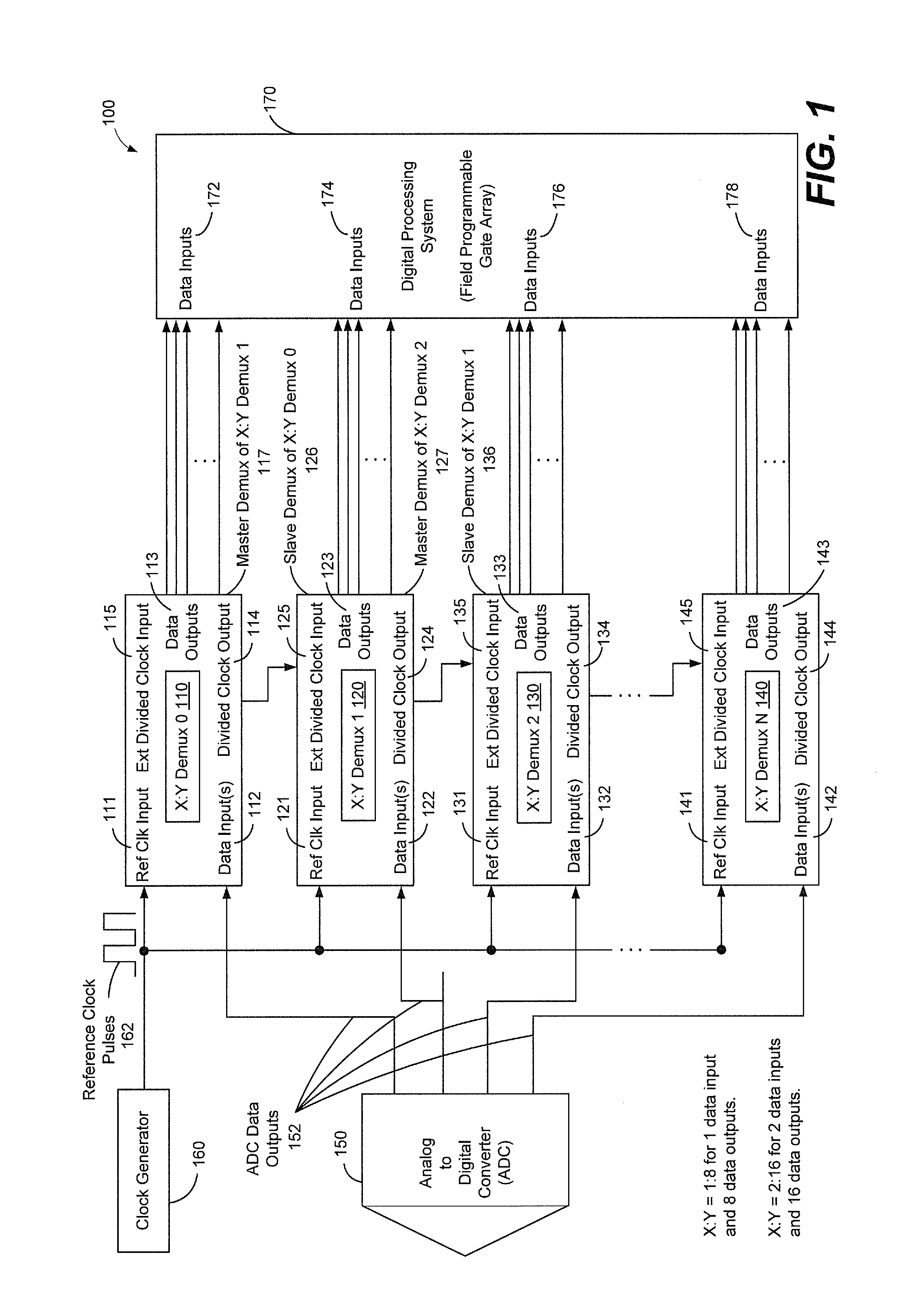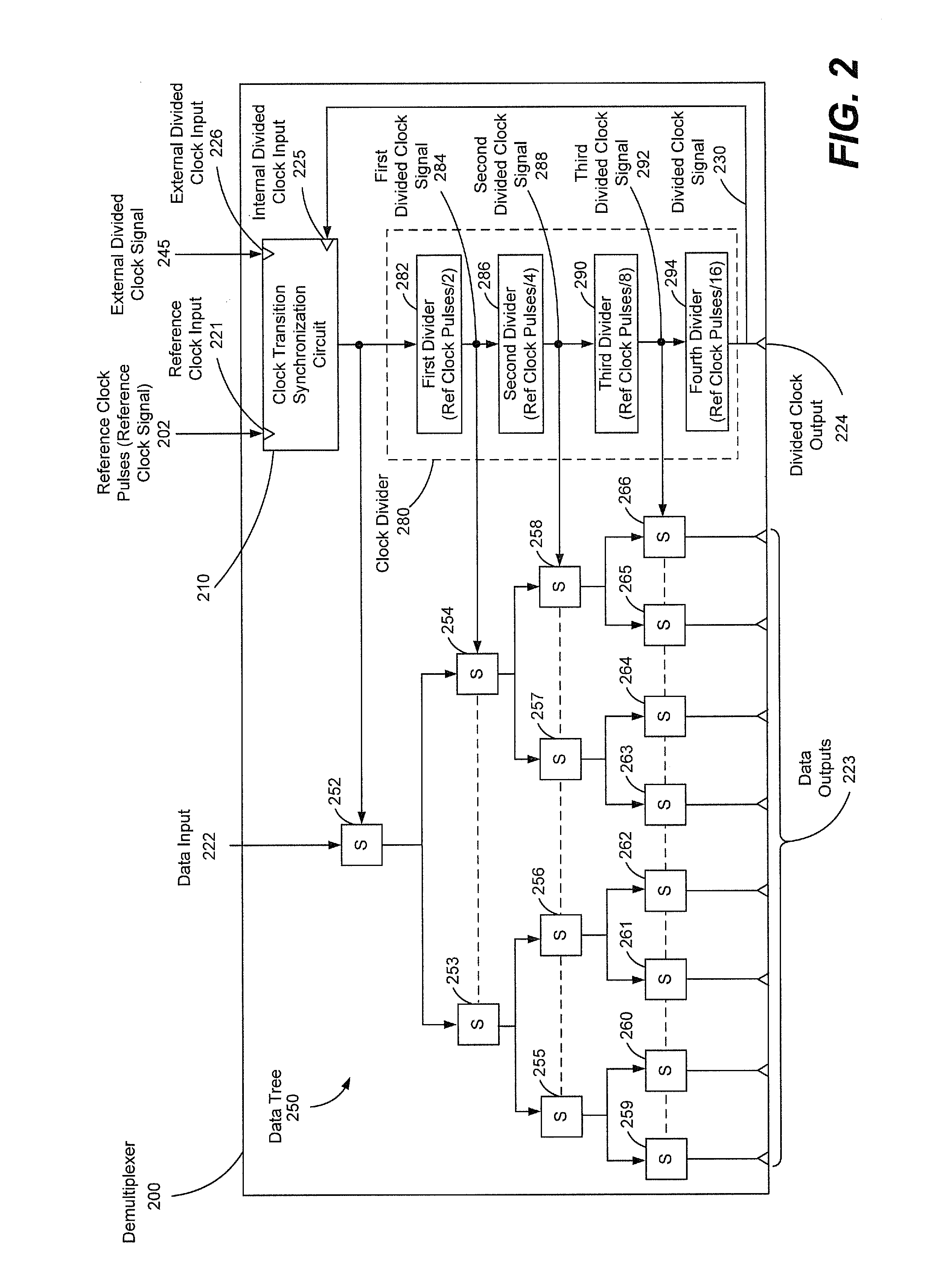Divided clock synchronization
a technology of divided clocks and clocks, applied in the direction of pulse automatic control, pulse manipulation, pulse technique, etc., can solve the problems of large quantities of digital data generated, transmitted, collected, processed, stored, etc., and the cost of inexpensive 8:64 demultiplexers may not be commercially availabl
- Summary
- Abstract
- Description
- Claims
- Application Information
AI Technical Summary
Benefits of technology
Problems solved by technology
Method used
Image
Examples
Embodiment Construction
When a plurality of devices, such as demultiplexers or other digital devices, are arranged in parallel to deserialize a digital data stream, data output by the parallel devices may be synchronized so that the deserialized data is not misaligned. When demultiplexers or other digital devices are powered on, the devices may start up in different states. Embodiments of the present disclosure synchronize divided clock signals by monitoring when a divided clock signal output by a slave device transitions between clock states out of synchronization with a master divided clock signal output of a master device. When the divided clock signal transitions between clock states out of synchronization, at least one of the reference clock pulses that drive the divided clock signal in the slave device is suppressed until the divided clock signal transitions in synchronization with the master divided clock signal.
FIG. 1 is a schematic diagram of a circuit 100 including a demultiplexer that utilizes a...
PUM
 Login to View More
Login to View More Abstract
Description
Claims
Application Information
 Login to View More
Login to View More - R&D
- Intellectual Property
- Life Sciences
- Materials
- Tech Scout
- Unparalleled Data Quality
- Higher Quality Content
- 60% Fewer Hallucinations
Browse by: Latest US Patents, China's latest patents, Technical Efficacy Thesaurus, Application Domain, Technology Topic, Popular Technical Reports.
© 2025 PatSnap. All rights reserved.Legal|Privacy policy|Modern Slavery Act Transparency Statement|Sitemap|About US| Contact US: help@patsnap.com



